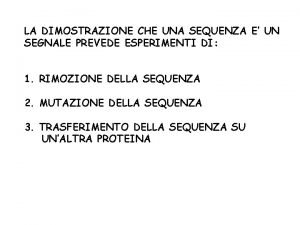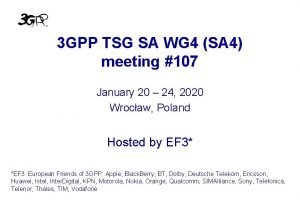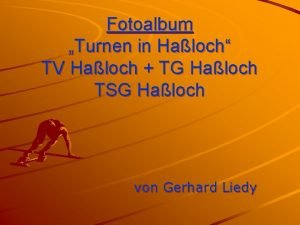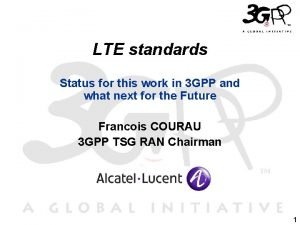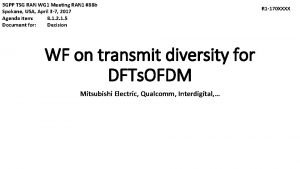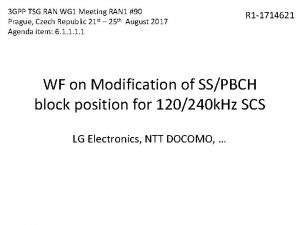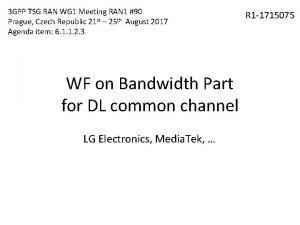3 GPP TSG RAN WG 1 Meeting 88




- Slides: 4

3 GPP TSG RAN WG 1 Meeting #88 Athens, Greece, 13 th-17 th February 2017 Agenda item: 8. 1. 1. 5 R 1 -17 xxxxx WF on DL RS for RRM measurement for L 3 mobility Huawei, Hi. Silicon, Intel, AT&T, …

Background In RAN 1#AH 1, some agreements were achieved for DL RS for L 3 mobility: • The following always-on signals are used for RRM measurement for L 3 mobility in IDLE mode: – NR synchronization signal, or – NR synchronization signal, and additional DM-RS for PBCH if DM-RS is supported for PBCH, or • Note: How to use DM-RS for RRM measurement is up to UE implementation – DM-RS for PBCH if DM-RS is supported for PBCH – Note that down selection will be needed if DM-RS for PBCH is supported • For CONNECTED mode RRM measurement for L 3 mobility, the following RS can be used if needed, in addition to IDLE mode RS: – FFS: CSI-RS, – FFS: RS separately designed from CSI-RS – Note that possibility of multiplexing of wideband RS in SS block is not precluded • RSRP(s) can be measured from the IDLE mode RS. – One RSRP value is measured from the IDLE mode RS per SS block. • FFS: UE measures one RSRP value from multiple SS blocks in an SS burst set – The measured values are referred to “SS-block-RSRP” • It is RAN 1’s understanding that “SS-block-RSRP” may correspond to the “beam quality” in RAN 2 agreements in multi-beam case, at least in IDLE mode. • RSRP(s) can be measured from the additional RS for CONNECTED mobility if such additional RS are defined (note that this is not yet agreed in RAN 1) – FFS: How to derive RSRP value(s) utilizing the antenna ports and resource(s) of the RS – FFS: Association of the measured qualities in CONNECTED mode to the “beam quality” in RAN 2 agreement in CONNECTED mode • Note: It is up to RAN 2 how to derive cell-level quality from the measured value(s) for L 3 mobility

Use Cases of Additional RS Companies Views on Use Cases of Additional RS Huawei UE in cell-edge to improve measurement accuracy NTT DOCOMO Use case 1: To identify beam/TRP in dense deployment scenarios when PSS/SSS are common(Similar to Co. MP scenario 4) Use case 2: Beam width of NR-SS is too wide to get the beam-level RSRP measurement for later L 1/L 2 mobility Ericsson Agree with NTT Docomo 1) and 2). In addition: Perform measurements on carriers not used for initial access, e. g. , NSA carriers.

Proposal • NR synchronization signal(NR-SS) is used for DL based RRM measurement for L 3 mobility in IDLE mode and Connected mode. • For connected mode, additional RS can be configured for DL based RRM measurement for L 3 mobility, in addition to NR-SS: – CSI-RS is one candidate of the additional RS; other RS separately designed from CSI-RS are not precluded if CSI-RS can not satisfy the measurement requirement • FFS: How to combine NR-SS and CSI-RS (and the other RS) to derive the cell-level quality (e. g. cell-level RSRP)
